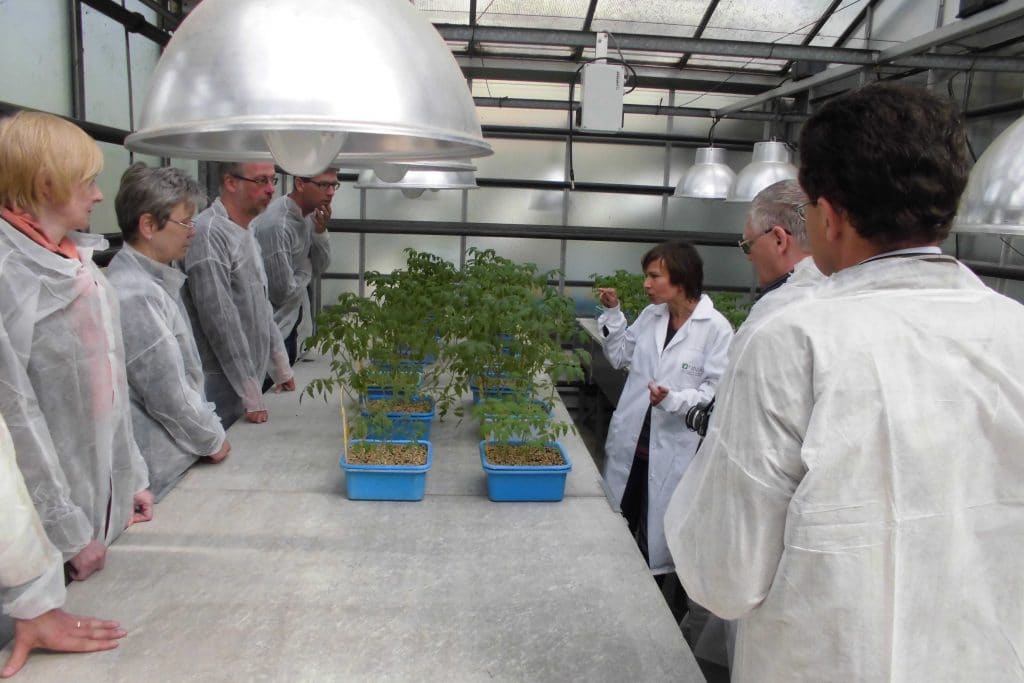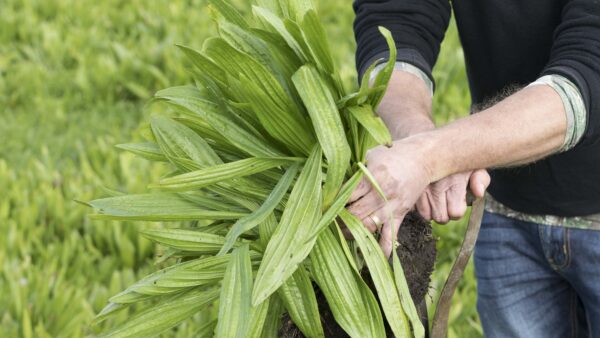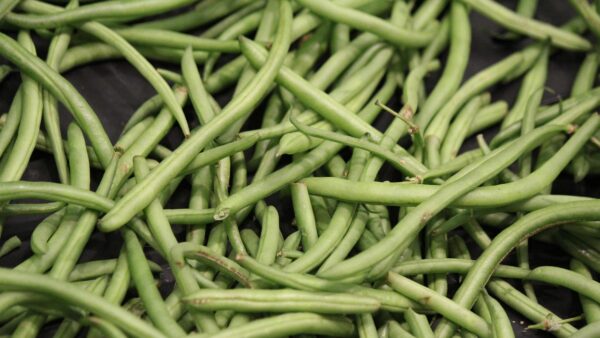Breeders typically spend a lot of their time and efforts in developing new plant varieties that have more disease resistance genes to protect them from harmful pathogens. These traits are very important for farmers and growers and contribute in many cases to environmental aims. When these new plant varieties are ready to be commercialized, it is of course important that such disease resistances are officially assessed to guarantee the resistance claim to the farmers and growers who are buying the seeds. Recently, there has been some controversy over the mandatory testing need of certain disease resistance characteristics. European Seed sat down with Sergio Semon, Expert for Vegetable species at the Community Plant Variety Office (CPVO) and asked him to describe how DUS examination works, which types of disease resistance characteristics there are in testing of plant varieties for Distinctness, Uniformity and Stability (DUS) and how the CPVO solved the controversy.
European Seed (ES): DUS testing is done on phenotype, including for disease resistance characteristics. Do you think disease resistance characteristics should appear in PBR test guidelines?
Sergio Semon (SFS): The CPVO DUS test protocols are not only applicable to tests for EU and national plant variety protection in EU Member States but also to tests carried out to grant market access under the seed marketing legislation. The protocols contain a table of characteristics, which will result in the phenotypical fingerprint of the candidate variety. There are obvious characteristics such as leaf length, fruit colour, time of maturity, etc. Then for some species, there are also some disease and insect resistance characteristics which are also tested. The creation of disease and insect resistant varieties is an important breeding goal of several seed companies. It is also important for farmers and growers to know whether a certain variety is resistant to a disease or insect. For this reason, the DUS test protocol should reflect these breeding advances. Not only can new varieties be declared distinct based solely on their disease and insect resistance profile, but the information as to whether a variety is resistant or not can also prove to be invaluable in the design of the DUS trial. Since most of the disease and insect resistance characteristics in the DUS test protocol are qualitative (the resistance is either absent or present), such characteristics are highly discriminatory and as a result can greatly reduce the number of comparison varieties grown out in the DUS trial. This makes for a more focused and cost-effective technical examination.
ES: Are there differences between crop groups using such characteristics? And if so, why is that?
SFS: There is active breeding for disease and insect resistance in all four crop sectors (agriculture, fruit, ornamentals, vegetable); nonetheless, it is the vegetable sector that has wholeheartedly taken on board the use of such characteristics for the DUS test. At present, none of the CPVO test protocols in fruit and ornamentals include disease and insect resistance characteristics, whilst there are very few examples in agriculture. In the vegetable sector, 12 of the major species (including tomato, lettuce, pepper, cucumber, melon, pea, etc.) have a total of 127 disease and insect resistance characteristics within their respective test protocols. Both examination offices and seed companies in the vegetable sector see benefits in including these characteristics in the test protocol. This is a good thing, since it promotes the use of modern vegetables varieties which have less need for phytosanitary products, thus leading to a greener and healthier product for the benefit of the environment and the consumer.
ES: In some cases, characteristics are made mandatory for all examination offices to assess (the so-called asterisk characteristics). What is your opinion about making disease resistance characteristics mandatory (i.e. with an asterisk)? What would be the benefits, and what are the drawbacks?
SFS: The number of asterisked disease and insect resistance characteristics is relatively small compared to the overall number of such characteristics in CPVO test protocols. Just 33 out of the 127 disease and insect resistance characteristics are obligatory, and this is limited to the most important diseases/insects in lettuce, tomato, French bean, melon, pea, pepper, spinach, and tomato rootstocks. A disease and insect resistance characteristic should only become obligatory for a vegetable crop if the pathogen is of economic importance within the whole of the European Union. By harmonising test procedures for these asterisked characteristics, it means that examination offices can exchange results and interpret them in the same manner. And for breeders, it stimulates them to create more uniform varieties which will also have a higher resistance profile for the benefit of society. The downside of making more of these characteristics obligatory is that both breeders and examination office have to invest in staff and facilities to provide disease and insect resistance testing facilities, and some smaller seed companies may also have to integrate such characteristics into their breeding programme in order to ensure that their varieties are uniform for such traits. Not fulfilling the mandatory requirements in the CPVO test protocols means that the variety can neither be marketed nor protected in the EU.

ES: There was some controversy over the addition of an asterisk to certain disease resistance characteristics. Why was there a problem for some of Europe’s breeders?
SFS: In the beginning of the decade, the CPVO was made aware by representatives of some vegetable breeding companies in central and eastern EU, that certain asterisked and insect disease resistance characterises were prejudicial to their interests. It was argued that such characteristics were of importance in the main salad crop growing areas in the south of the EU, but not so in the continental parts of the EU. The breeders from central and eastern EU were thus obliged to do active breeding for some disease and insect characteristics for which the growers in those parts were not interested in. Furthermore, even if the variety was declared as susceptible for any particular characteristic, it still had to conform to the uniformity criterion or otherwise risk failing the DUS test, and thus being unable to be registered for marketing purposes or protected by plant variety rights. To a certain extent, some of these characterises were already obligatory when these countries joined the EU in 2004, although there were other characteristics that have subsequently become obligatory with the backing of the CPVO vegetable experts group, made up of representatives from the entrusted examination offices and the European Seed Association (ESA).
ES: What has the CPVO done to deal with these concerns?
SFS: Some of the Slovak breeders took the affair to the Slovak Constitutional Court, and as a consequence the representatives of the Slovak examination office requested that the CPVO treat this delicate matter with urgency. In 2013, the Administrative Council of the CPVO decided to impose a provisional moratorium on any new asterisks being added to disease and insect resistance characteristics in CPVO vegetable protocols. In the meantime, the CPVO, ESA, and the entrusted examination offices in vegetables continued to analyse the matter to try and find a technical solution. Part of this was a questionnaire formulated jointly by the CPVO and ESA, which was subsequently addressed to the ESA vegetable members in order to get their feedback on their experiences with the 127 disease and insect resistance characteristics. There was also a review of each of the 33 asterisked disease and insect resistance characteristics to see if these were necessary. The main proposal emanating from the consultation process was to establish a running-in phase in the adoption of new asterisked disease and insect resistance characteristics in CPVO vegetable protocols. This allows breeders to develop their breeding activity in that area over a period of time, as well as permitting examination authorities to establish or build-up the necessary testing facilities. The CPVO Administrative Council agreed in 2015 to adopt the principle of a normal five-year phasing-in period for each new asterisked insect or disease resistance asterisked characteristic, although the length of time could be varied according to the complexity of each characteristic. The phasing-in principle has been well received by all CPVO stakeholders, and more thought is now given on the necessity of an asterisk as well as how long stakeholders require in order to adjust until the asterisk becomes obligatory. The principle was first implemented in 2016 with partial revisions of the CPVO lettuce and spinach protocols, with a 3-year phasing-in period for several Bremia lactucae races in lettuce and several Peronospora farinosa races in spinach. Since the phasing-in period seems to work well so far, it is foreseen that there will be further implementation into CPVO vegetable protocols in the coming years.
ES: In your view, what other improvements could be made to DUS examination?
SFS: In relation to disease and insect resistance characteristics, the CPVO has co-financed a series of R&D projects entitled “Harmonisation of resistance tests for DUS testing (Harmores)”. These are collaborative projects between the CPVO’s entrusted examination offices in vegetables — which are coordinated at the technical/scientific level by GEVES, the French examination office — seek to establish harmonised testing protocols amongst examination offices and seed companies. The participation of numerous ESA vegetable members in the R&D projects is invaluable, since the tests need to be done in the same way by all the stakeholders in order to be able to interpret the results correctly and utilise them for registration, protection and commercialisation purposes. Two Harmores projects have been finalised so far, and the improvements in the resulting methodology for numerous disease and insect resistance characteristics have been integrated in partial revisions to the CPVO DUS test protocols for tomato, French bean, pea and pepper. A third Harmores project is currently ongoing for improving the testing methodologies to Meloidogyne incognita and Fusarium oxysporum race 0 and 1 in tomato, Erysiphe pisi in pea, and Podosphera xanthii, Fusarium oxysporum races 1.2 and 2 in melon. The current project is foreseen to conclude in 2019. We are also seeing more use of biomolecular tools as an alternative to the laboratory test for disease and insect resistant characteristics in DUS test protocols. The marker technique is useful as long as a specific gene conferring the resistance is present in the candidate variety, and if so, this can lead to efficiency gains in the DUS test. If the gene is not present though, or the results of the biomolecular test are inconclusive, then the regular laboratory test must be utilised. It is to be noted that the EU is usually at the forefront in the use and implementation of disease and insect resistance characteristics in DUS testing, and fortunately a high level of harmonisation has been achieved on this matter via the CPVO vegetable protocols. The EU delegations subsequently make such proposal at UPOV via its Technical Working Party Vegetables (TWV), with the aim that these disease and insect characteristics can then be implemented into UPOV test guidelines. However, reaching agreement at the EU level is one thing, doing so at a worldwide level is quite another; thus whilst there is quite a high adoption rate, understandably there are a fewer number of disease and insect resistance characteristics (in particular asterisked ones) in UPOV vegetable test guidelines.











